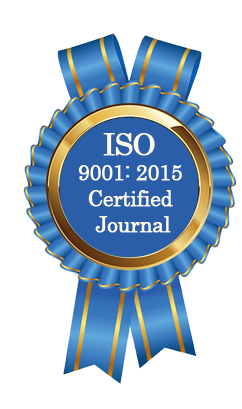| All | Since 2020 | |
| Citation | 105 | 60 |
| h-index | 4 | 4 |
| i10-index | 3 | 2 |
WJAHR Citation 
Login
News & Updation
Best Article Awards
World Journal of Advance Healthcare Research (WJAHR) is giving Best Article Award in every Issue for Best Article and Issue Certificate of Appreciation to the Authors to promote research activity of scholar.
Best Article of current issue
Download Article : Click here
Indexing
Abstract
ANAESTHETIC TECHNIQUES FOR OPHTHALMIC SURGERIES IN BENUE STATE UNIVERSITY TEACHING HOSPITAL (BSUTH):- A REVIEW OF 100 CONSECUTIVE CASES.
*Efu ME, Ojabo CO, Ojo BA, Chaha K, Eke BA Ozuagu MA, Anefu GO
ABSTRACT
Background: Historically, ophthalmic surgeries were first performed without anaesthesia and then under local anaesthesia because of the accessibility of the eye and the disastrous effects of coughing under general anaesthesia. Regional anaesthesia in form of retro-bulbar block, peri-bulbar block, sub-conjunctival block, sub-tenon anaesthesia as well as topical anaesthesia has become the most prevalent form of anaesthesia used globally for ophthalmic surgical procedures. In spite of the global trend of preferred use of regional anaesthesia and judging from its advantages, some ophthalmic procedures are carried out under general anaesthesia. The choice of anaesthesia for surgical procedure is influenced by the type of surgery intended, patient related factors and surgeon’s preference. This study was carried out to ascertain the anaesthetic techniques employed for ophthalmic surgeries in the Benue State University Teaching Hospital (BSUTH), Makurdi. Methodology: A total of 100 consecutive case files of eligible patients were retrieved from the records department. Relevant information were extracted from the patients’ folders and transferred into a prepared proforma. Data collected were analyzed using SPSS version 25 using simple statistics. Results: A total of 100 patients were evaluated. There appears not to be dominance by any age group. Nevertheless, the age bracket that recorded the highest number of patients is the one between 61 and 70 years with 17 accounting for 17% of the study population. Fifty-eight males and 42 females were evaluated making up 58% and 42% of the study population respectively. Of 108 indications for sorcery, cataract was observed 36 times accounting for 33.3% of the variables. This was followed by glaucoma with 25 making up 23.1% and pterygium with10, making up 9.2%. Also, of the 111sugrical procedures undertaken, trabeculectomy took place 25 times accounting for 22.5% of the variables. This was followed by the two cataract surgical procedures of small incision cataract surgery + posterior chamber intraocular lens (SICS+PCIOL) and extracapsular cataract extraction+posterior chamber intraocular lens (ECCE+PCIOL) which were undertaken 24 (21.6%) and 12 (10.8%) respectively. Of the 100 patients evaluated, 22 (22%) underwent general anaesthesia with tracheal intubation while the rest, 79 (79%), had their surgeries done under local or regional anaesthesia. Conclusion: This study demonstrates overwhelmingly that in Benue State University Teaching Hospital, the anaesthetic technique of choice for ophthalmic surgery is local/regional anaesthesia. General anaesthesia comes a distant second, being employed mostly in the paediatric age group and in patients with penetrating eye injury where retro-bulbar block is contraindicated.
[Full Text Article] [Download Certificate]
